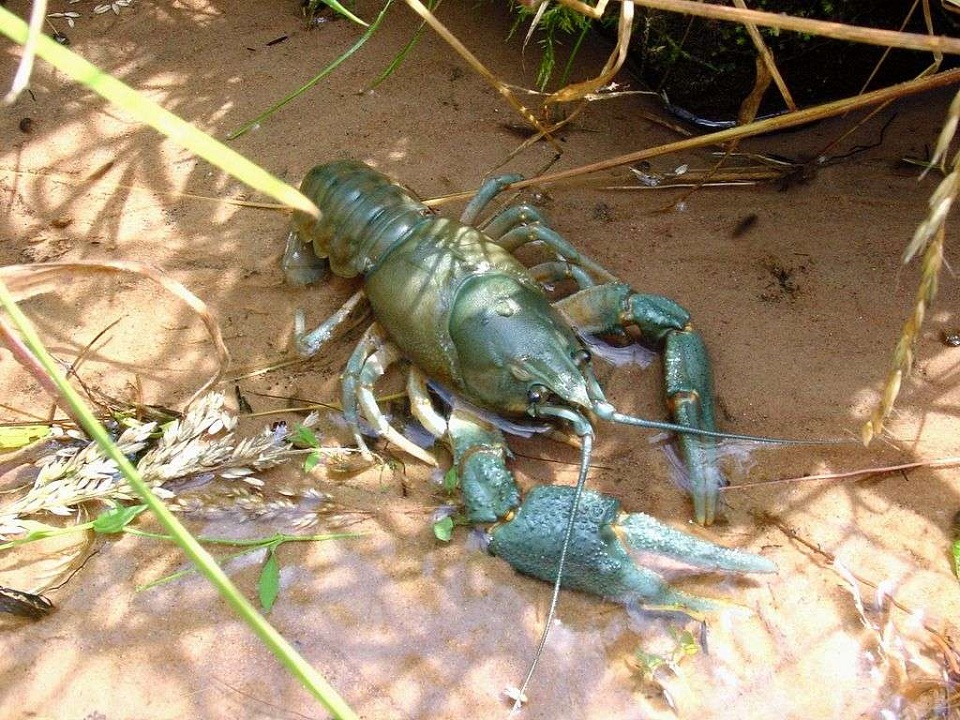こんにちは!フィッシングトランスレーターのサブイズム(@sabu94_1982)です。
11月急遽大分に行くことになりました。
中学のときからの友人に会いに行ってきます、5年ぶりなんです٩(๑´0`๑)۶
<Facebookページへの「いいね!」を押して頂くと、常に最新の記事が御覧になれます。>
Source:バスマスターウェブより文章を引用しています。
Contents
『Understanding bass forage: Crawfish』を解説

本記事は長文の為、「3部作」に分けて執筆したいと思います。前編、中編、後編となります。
夏が略終わり、これから秋シーズンになりますね。
そうこれからは巻物もシーズンになってきますが、この”クローフィッシュ(ザリガニ)”を模したベイトを投げる方も多くなってくるのではないでしょうか?
バスマスターの記事には下記のような記載があります。
*翻訳部は()で明記してきます。
Knowing the mating and molting rituals of crawfish will give you the upper hand when using imitation baits.
(ザリガニの「交尾」と「脱皮」の行事を知ることでクロー系ワームを使用する際に優位になるでしょう。)
確かに、交尾と脱皮については、あまり知らないです(笑)
Most bass anglers use crawfish imitations without a very clear understanding of why they should be throwing them, and more importantly when. All of us know that crawfish lures are often effective and sometimes the only go-to bait of the day. But to truly understand when you need to use a crawfish bait, you have to understand why bass eat them and when this forage is most appetizing to the quarry anglers seek.
(多くのバスアングラーは、何故クロー系ワーム投げるべきか、そして何時それが重要かというのを明確に理解すること無しに使用しています。我々全員が、クロー系ワームがまあまあ有効的で、時々その日の主軸になるこを知っています。けど、本当に知ること、あなたがそれを使用する必要がある時に、何故バスがそれらを捕食し、そしてアングラーが求めている場所でザリガニが最も美味しそうな時に捕食するかを理解する必要があります。)
深い内容です。当方もクロー系ワームの本当の意味とか考えずに漫然とキャストしていましたww思考停止ですね。
この内容が少しでも参考になれば幸いです。では見ていきましょう。
(敢えて原文を載せて、そこに当方の感想も載せる形式の方が生の情報が伝わるかと思い、このような形式にしています。ですが、見にくいとか、こうしたらという御意見がありましたら、是非宜しくお願い致しますm(_ _)m)
ザリガニの生息地域

Crawfish are everywhere: ditches, frequently flooded agricultural fields, almost all ponds and, of course, your favorite impoundment or river. There’s not a state in the contiguous 48 that doesn’t have millions of them swimming around feeding the local bass populous, not to mention Cajuns and the occasional Cajun wannabe.
(ザリガニはあらゆる場所にいます。どぶ、浸水した農耕地、殆どの池やあなたの好きな貯水池や川にも居ます。隣接している48州の中でバスの繁栄の餌になる何百万ものザリガニが居ない州はありません。)
Intimate knowledge of crawfish behavior will empower you to fully exploit baits that imitate this popular dinner item of bass — and going back to science class is your ticket to information. Bassmaster wants to take you back to school with some of the most knowledgeable freshwater lobster men in the industry. Keep in mind that the parameters, times and conditions that will be discussed vary from water to water, subspecies to subspecies and latitude to latitude.
(ザリガニの行動に対する深い知見は、バスの主だった夕食であるザリガニを模したクロー系ワームを有効的活用出来るように自信を持たせてくれるでしょう。バスマスターとしては、もっとも知識のある淡水ロブスターの漁師を連れてあなたを学校へ連れ戻していきたいです。これだけは覚えておいて下さい、水から水、亜種から亜種そして、地域から地域にわたり議論される特徴、時間、そして状態について覚えておいて下さい。)
言いたいことは、これから議論する内容をしっかりと頭に入れてくださいということです。
Like all creatures, crawfish are determined to mate, eat and protect themselves from predators. Understanding the timing of these events is key to consistently taking bass on crawfish imitations.
(他の全ての生物同様に、ザリガニも交尾をし、捕食し、そして外的から身を守る。これからの行動のタイミングを理解することは、クロー系ワームでバスをコンスタントにキャッチしていくためのヒントになります。)
[ad#ad1]岩の上がこの上無く好き(Love on the rocks)

February through May is the first major period of crawfish activity, based on geographic location. When the water temperature reaches approximately 50 degrees, crawfish emerge from rock crevices into the great wide open and begin looking for receptive females.
(2月から5月にかけてが、地形に基づいたザリガニの最初の主だった活動になります。水温がおよそ華氏で50度(≒摂氏10度)になった時点で、ザリガニは岩の割れ目からとても広いエリアにひょっこりと現れ、交尾可能なメスを探し始めます。)
春の水温で「10℃」がザリガニの行動では大事ということですね!
Many of the emerging crawfish males and females are still sexually active from the previous fall. What’s significant about this two to three week period in spring (depending on rising water temperature), is that it’s one of the few times males walk on top of rocks, exposing themselves to bass.
(わんさかと湧いてきたオスとメスのザリガニは、昨年の秋から交尾活動が盛んです。この春の2-3週間(水温の上昇具合にもよるが)で重要なのは、数回に一回オスのザリガニが岩の頂点に登り、自身の身をバスにさらすことです)
おおっ!何でだ?
Trapping studies have revealed that below 45 degrees, crawfish have little to no activity while buried in mud burrows or rock crevices. But when the water rises to 50 degrees, it’s a whole new ballgame.
(狩猟学が明らかにしたのは、水温が華氏45度(≒7.2℃)を下回ると、ザリガニは泥の穴の中や岩の割れ目で殆ど活動を休止します。しかし、水温が華氏50度(≒10℃)まで上昇すると、全く新しい状況になります。)

Where will bass be picking off these vulnerable mudbugs? Rocks will point the way. It may sound oversimplified, but rocky substrate has the highest concentration of exposed crawfish, which in turn translates to the greatest numbers of feeding bass.
(では、どこでこの脆弱な泥ザリをバスは狙っていくのでしょうか? 「岩」がその場所なんです。あまりにも簡単に聞こえるかもしれませんが、岩盤の上は無防備なザリガニの密集地なんであり、それと同様に多くのフィーディングバスの集まる場所でもあるのです。 )
Prime conditions in most bass watersheds combine 50 degree average water temperature with rocks clean of silt or mud. Unlike bass that clean their spawning ground with their tails, crawfish rely on current or wave action to do their housework.
(殆どのバスに最高のコンディションは、水温華氏50度(≒10℃)平均でいる水域で、岩に沈泥や泥が無いところです。尾びれでスポーニング場所を綺麗にするバスとは異なり、ザリガニは流れや波の動きによる掃除に頼っているのです。)
The rocks must be clean to open up caves that can create endless lattices of spawning habitat. That may be at 3 feet of water on a wind-swept point, or at 30 feet on a small hump in the middle of the lake.
(岩は産卵行動の習性による終わりのない格子作成をする為に綺麗でなければなりません。それは風がふきあれる3フィート(≒90センチ)の水深の場所かもしれないし、湖の中心にある小さなスタンプの30フィート(≒9m)部分かもしれません。)
Whether you’re fishing in Alabama in February or Michigan in May, the formulation of season, clean rock and ideal temperature is guaranteed to attract most of the mating crawfish — and feeding bass — in the area.
(2月のアラバマから5月のミシガンで釣をする場合、そのシーズンはキレイな岩そして理想的な水温は多くのペアリングをしているザリガニに撮って保証されたものになっており、餌を捕食するバスもその同じエリアにいます。)
琵琶湖や霞で水温10度前後となるとやはり2-4月でしょうかね??
[ad#ad1]
岩以外にも産卵場所に?
Depending on the species, crawfish can and will spawn in mud. However, they rarely do so if clean, rocky habitat is available.
(ザリガニの種類にもよりますが、彼らは土の中で産卵することも可能ですしやるでしょう。しかしながら、もしキレイな岩の習性を生かせるのであれば、殆どそれらはやらないでしょう。)
One of the ways bass locate crawfish is by sound. “A crawfish moving on a rock makes a tapping/clicking noise. Bass use this sound to locate crawfish,” said Tertuliani.
(バスがその場所に位置する1つに、「ザリガニが奏でる音」があります。”岩の上を歩くザリガニがタップ乃至はカツッて音を発生させます。バスはこのサウンドを逆手にとって、ザリガニの位置を特定するのです”とTertuliani氏。
これは知りませんでしたし、やはりバスは音を最重要視しているのが、この発言から良くわかります。

Crawfish also are light sensitive. Water clarity and penetrating sunlight are key ingredients to active, quality habitat. If the prime habitat happens to be in shallow water or is more exposed to direct sunlight, low light or cloudy days often provide better fishing than bright afternoons.
(またザリガニは光に敏感なんです。水の透明度と光の透過性は彼らの行動や習性の質に対してキーとなる要素なんです。もしも重要な習性がシャローウォーターや太陽の直射日光に直接晒される場所でスポーニングが起こる際は、ローライトや曇の日が明るい昼下がりよりも釣りには良く働きます。)
さて、長文お疲れ様でした!
前編の纏め
*ザリガニの習性(交尾と脱皮)を理解することで、クロー系ワームで釣れる確率も上昇。
*毎年2-5月において、ザリガニは水温華氏50度(≒10℃)を境に行動を開始。(主に産卵)
*水温が華氏45度(≒7.2℃)以下では行動しない。
*ザリガニは岩の上でスポーニングをする。泥でも可能。
*岩の掃除はバスのように尾びれで出来ないので、水の流れに任せて掃除。
*ザリガニは光にも敏感。
さあ、では次回は中編です。お楽しみに!
Have a Great Fishing!

Sabuism (原)
*Facebookの「いいね!」&Twitterのフォローを押すと 最新の情報をデリバリーします(*´ω`*)
*通訳・翻訳業務の外注を承ります。大手釣具企業で実績あります! 問合せはこちらまで sabuism94@gmail.com

















